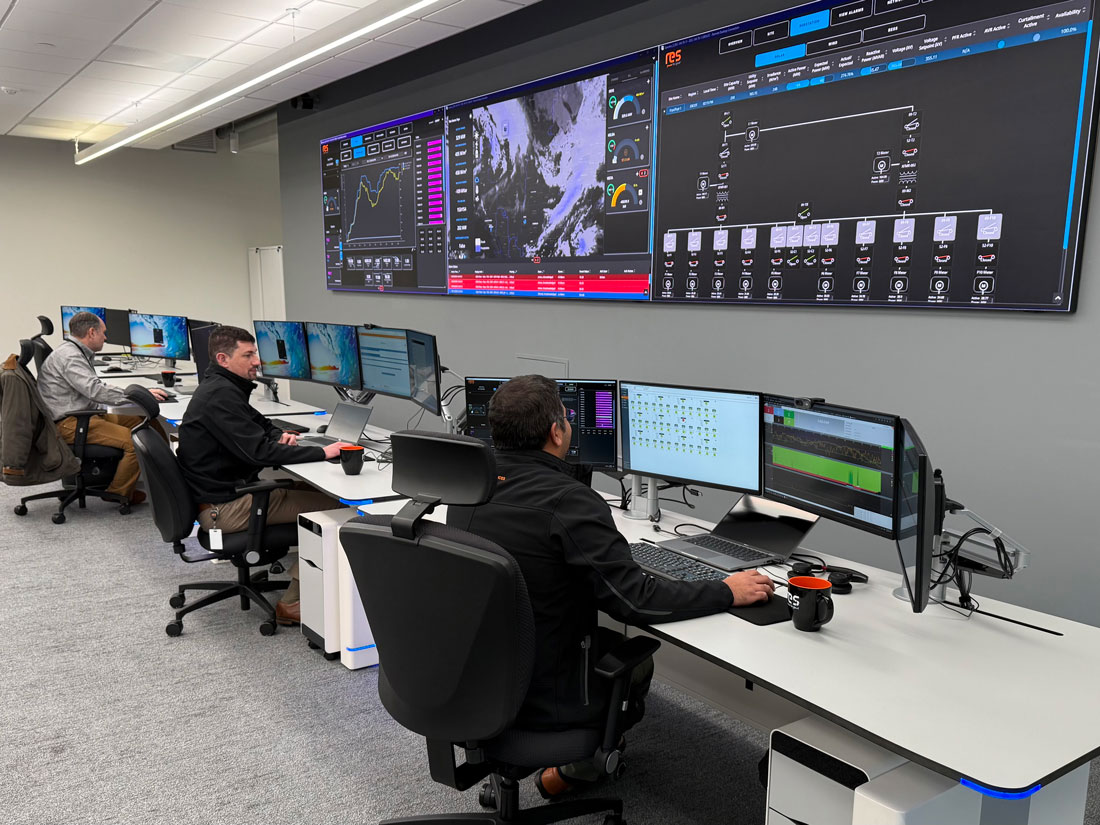Solutions
Our passionate and experienced people deliver successful clean energy projects globally.
Technologies
Driving a clean energy future through state-of-the-art renewable technologies.
See all technologiesResources
Browse our latest resources, including company updates, customer stories, industry insights, and research reports.
See all resourcesCareers
Join a collaborative team of passionate individuals who engage in meaningful, stimulating, and world-changing work.
See all careersAbout RES
We live our mission, celebrate the people making it happen and transform the way the world produces and consumes energy.
See about usOur offices
Like our business, we’re truly global – but proudly local. Find contact and location details for every RES office.
Contact us
By Jean-Claude Robert, Senior Vice President, Services at RES
Operators of more than 1,000 legacy renewable sites must register in the next year
In a move that’s set to reshape compliance expectations for renewable energy operators across North America, the North American Electric Reliability Corporation (NERC) has introduced new registration thresholds designed to enhance the reliability of the Bulk Electric System.
This change significantly broadens the number of renewable energy sites — particularly inverter-based resources (IBRs) such as solar, wind, and battery storage — that must register and comply with NERC’s Generator Owner (GO) and Generator Operator (GOP) standards.
From 75 MVA at 100 kV to 20 MVA at 60 kV: Why it matters
Previously, only sites with 75 MVA (megavolt-amperes) interconnected at 100 kV or more were required to register. Under the new guidance, any IBR with just 20 MVA capacity interconnected at 60 kV or more must now register with NERC.
While this adjustment may seem minor, it effectively means that more than 1,000 legacy renewable sites across the U.S.—many of which were previously outside of NERC’s scope—will now be required to comply. This marks a pivotal moment for our industry. NERC is formally recognizing that inverter-based renewables are core to the grid, and the compliance requirements are shifting accordingly.
Site operators have until May 2026 to register and implement compliance programs, a challenging timeline for assets that may have never been under NERC oversight before.
What does this mean for renewable operators?
The implications extend well beyond paperwork. Registered GOP entities must demonstrate 24/7 operational oversight, event reporting capabilities, compliance with communications protocols, voltage and frequency monitoring, and more.
For many asset owners and operators, especially those in the 20–75 MW “gray zone,” this will mean:
- Defining and registering GO and GOP entities
- Establishing a real-time monitoring and communications infrastructure
- Training personnel and documenting processes
- Reporting outages and events in compliance with NERC standards
This can feel overwhelming for those unfamiliar with NERC’s web of requirements. Compliance isn’t just about checking boxes; it’s about fostering a reliable operational culture, which can be a significant challenge for many smaller operators.
RES operations control center: Purpose-built for compliance
RES has been preparing for this shift. Our operations control center in Denver was built to meet the demands of GOP responsibilities. Today, we operate 18 renewable assets totaling over 1,700 MW across all major North American interconnects. We anticipate surpassing the threshold of 1,500 MW in a single interconnect this year, elevating our control room to Medium Impact NERC classification.
From day one, our control center was designed to integrate compliance into our operations, not as an afterthought but as a standard. Here’s what that looks like in practice:
- Trained operators: Our team undergoes rigorous NERC-specific training (CIP, COM, PER, and beyond) and conducts operations in accordance with recorded, auditable standards.
- Voltage monitoring: Integrated through our enterprise SCADA system to ensure compliance with VAR-002.
- Event management: Our operators escalate reportable events to our compliance team in real-time.
- Communication compliance: All communications are logged and recorded to meet standards like COM-001, COM-002 and TOP-001.
RES can serve as the registered GOP or offer standalone services to complement an existing O&M provider. That flexibility allows asset owners to meet compliance obligations without restructuring their entire operational model.
Built for growth, ready for complexity
The shift to a lower NERC threshold isn’t just about bringing more sites under compliance, it’s a sign of the times. Renewables are now a critical component of grid reliability. NERC is adapting, and operators must too.
RES’ operations control center has grown rapidly—from 250 MW to over 1,700 MW under management in less than a year. It already spans the Texas, Midcontinent Independent System Operator (MISO), Southwest Power Pool (SPP) and Western interconnects. RES’ portfolio ranges from 2 MW community-scale projects to 550 MW utility-scale sites.
We’re not just compliant; we’re also scalable. Our control center is designed for small, medium, and large operators needing a partner who understands the operational and regulatory landscape.
Compliance is here. Are you ready?
With just over a year before legacy sites must register, now is the time to assess portfolios, identify impacted assets, and begin standing up GOP and GO programs. Whether you’re an independent power producer, an asset manager, or a project developer, the path to compliance will be smoother if it starts early and with the right support.
Operational excellence and regulatory compliance are two sides of the same coin. As NERC raises the bar, RES is ready to help you rise to meet it—efficiently, effectively and with reliability at the core.
We don’t just follow the O&M contract; we’re also laser-focused on what matters to our clients, like the interconnection and power purchase agreements. The RES operations control center is open for business and built to deliver on those priorities.

